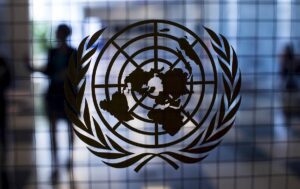
OTP Leasing LLC, the largest player in the market, has already purchased agricultural equipment worth UAH 100 million since the beginning of the war and intends to increase purchases to UAH 1 billion this spring, Andriy Pavlushin, CEO of the leasing company, said.
“The vast majority of customers paid their monthly payments even in these terrible 50 days of war,” he wrote on his Facebook page.
Pavlushin added that the company also helped the Ukrainian army for UAH 58 million in cars, trucks and money, and continues to do so.
On April 6, the CEO announced that after a 41-day break, OTP-Leasing again began financing existing proven agricultural clients of medium and small businesses, “those clients who paid invoices for March on time.”
Pavlushin then indicated that he had bought tractors and seeders for UAH 70 million during the week.
OOO “OTP Leasing” is a part of the European financial group OTP Group. The company was founded in June 2008 as a subsidiary of OTP Bank. Currently, according to the CEO, the company has 2,000 customers and 170 employees.
The company’s revenue for 9 months of 2021 decreased by 44.2% – to UAH 99.71 million, while net profit almost doubled – by 95.7%, to UAH 463.3 million, and assets increased by 31.5% – up to UAH 15.11 billion, including long-term receivables – by 29.2%, up to UAH 14 billion.

The French reinsurer SCOR tentatively estimates the volume of compensation as a result of Russia’s military attack on Ukraine at “a high double-digit figure in millions of euros”, while warning that the company could end the first quarter of 2022 with a loss.
As reported on the website of the reinsurer, SCOR became the first of the global reinsurers to publish information about how much the war in Ukraine could cost their business.
It is also noted that the total losses of the industry as a result of this war will be equivalent to a catastrophic event of a medium scale (from EUR15 billion to EUR30 billion). But given that hostilities affect insurance payouts, and given the considerable uncertainty as hostilities continue, it is now very difficult to give an accurate estimate, SCOR said.
By announcing early first quarter results, SCOR definitely wants to give shareholders and the market a picture of what to expect. SCOR’s strategy is to reserve funds “as large as possible as early as possible”.
The company is closely following the course of events in Ukraine, which makes it possible to adequately assess the potential impact of the aggressor’s military actions and international sanctions against Russia on global reinsurance.
SCOR emphasizes that its subsidiary in Russia has suspended the signing of new reinsurance contracts.
The company emphasizes that payments are expected under political risk, credit risk and aviation insurance reinsurance contracts.
The reinsurer noted that these payments will be attached to other payments in the first quarter of 2022, in particular for damage due to natural disasters (including floods in Australia, European snowstorms, drought in Brazil) and the continuation of the Covid-19 pandemic in the United States.
“Such situations will negatively affect the combined ratio for P&C insurance (property insurance), as well as the technical result of life and medical insurance. This is expected to lead to losses for the quarter,” the company notes.
SCOR also stated that the company is well capitalized and has a strong solvency ratio.

Losses among civilians from February 24, when Russia started the war against Ukraine, until 24:00 on April 17 amounted to 4890 civilians (in the summary three days earlier – 4577), including 2072 dead (1982), reports the office of the UN High Commissioner for Human Rights person on Monday.
“OHCHR believes that the actual figures are much higher as information is delayed from some areas of heavy fighting and many reports are still awaiting confirmation,” the UN data document notes.
According to him, this applies, for example, to Mariupol (Donetsk region), Izyum (Kharkiv region), Popasna (Luhansk region) and Borodyanka (Kyiv region), where there are reports of numerous civilian casualties. They are subject to further verification and are not included in the above statistics.
“The majority of civilian deaths or injuries were caused by the use of explosive devices with a wide area of effect, including shelling from heavy artillery and multiple launch rocket systems, as well as rocket and air strikes,” the report says.
According to confirmed UN data, 537 men, 327 women, 60 boys and 38 girls died, while the sex of 71 children and 1039 adults has not yet been determined.
Among the 2,818 injured were 56 girls and 61 boys, as well as 155 children whose gender has not yet been determined.
Compared to three days earlier, seven children were killed and 16 others were injured, according to the UN.
OHCHR indicates that in Donetsk and Luhansk regions, as of midnight on April 18, there were 653 (637) dead and 1,059 (1,040) injured in government-controlled territory, and 79 (79) dead and 312 (291) injured in territory controlled by self-proclaimed “republics”.
In other regions of Ukraine under government control (in Kyiv, as well as in Zhytomyr, Zaporozhye, Kiev, Sumy, Odessa, Mykolaiv, Kharkiv, Kherson, Dnipropetrovsk, Cherkasy and Chernihiv regions), the UN recorded 1340 (1266) dead and 1447 (1320) wounded .
The report also states that, according to the Office of the Prosecutor General of Ukraine, as of 8:00 am on April 18, 205 (198) children were killed, 362 (355) were injured.
The report, which was released for the first time after a two-day break, traditionally indicates that the increase in indicators in it should not be attributed to the previous report only for cases that occurred on April 15-17, since during these days OHCHR also verified a number of cases that occurred in previous days.

The European Bank for Reconstruction and Development (EBRD) has approved a framework program of up to EUR2 billion under the EBRD’s Sustainability Package, the bank’s broad strategic approach in response to Russia’s war against Ukraine.
“The framework program will use various types of financial instruments for private clients, sovereigns, municipalities, municipal companies and other state-owned enterprises and financial intermediaries (including state-owned banks) in Ukraine and neighboring countries affected by the influx of Ukrainian refugees,” the message says. bank website on Thursday.
According to him, the Board of Directors made a decision on April 4. He included Bulgaria, Croatia, the Czech Republic, Estonia, Hungary, Latvia, Lithuania, Moldova, Poland, Romania, Slovenia and Slovakia among the affected countries.
Subprojects will be provided at the expense of the usual resources of the bank, including its financing under the guarantees of donors, the report specifies.
The overall goal of the program is to help support service delivery and protect business activity in Ukraine and affected countries, with the ultimate goal of preserving livelihoods, the EBRD said.
“For Ukraine, the framework covers all sectors, with a particular focus on energy security, vital infrastructure, food security and pharmaceutical supply chain support,” the release notes.
In the case of the affected countries, refugee-related issues will be addressed, and will mainly cover areas such as energy security, municipal and national infrastructure, and liquidity through capital markets and financial intermediaries.
“As a result of the war in Ukraine, the market for liquidity and long-term financing is practically closed, and in the affected countries is significantly limited, as both local and international financial institutions tighten risk appetite. provides greater financial security driven by unprecedented adverse market conditions and heightened uncertainty,” the paper concludes.

For the period from mid-March to April 13, Ukrainian banking institutions provided loans to farmers under the state program to support the sowing campaign-2022 for a total of UAH 5.43 billion, including loans and portfolio guarantees for the week of March 6-13. UAH 3.64 billion
The relevant data on the financing of the sowing campaign in the context of the Russian military invasion of Ukraine was published on the website of the Ministry of Agrarian Policy and Food of Ukraine on Thursday.
“In fact, over a week, loans were issued for more than UAH 3.6 billion for more than a thousand farmers. Banks took a rather fast pace to cover the needs of our agricultural producers, who are now undergoing a sowing campaign. Today, agricultural loans can be issued by 22 Bank, and the goal of the state is to increase lending to the agricultural sector up to UAH 40 billion, that is, almost eight times more,” the department quotes its head, Mykola Solsky.
It is specified that 80% (UAH 4.41 billion) of the provided borrowed funds were portfolio guarantees, while 2.08 thousand agricultural producers received access to financing in total (1.18 thousand in the last week).
Most of the loans for the sowing campaign were attracted by the agrarians of Kirovohrad region – UAH 1.81 billion (+UAH 1.4 billion for the week), Vinnitsa region – UAH 944 million (+UAH 579 million), Dnepropetrovsk region – UAH 738 million (+UAH 471 million), Odesa – UAH 549 million (+UAH 388 million) and Lviv – UAH 348 million (+UAH 189 million) regions.
According to the Ministry of Agrarian Policy, loans up to UAH 60 million under this program are issued at 0% per annum (under the state financial support program “Affordable loans 5-7-9%”). The term of such lending is up to six months, and after its completion, the interest rate for borrowers will be 5% per annum. Agrarians falling under the definition of an agricultural producer can use the loan.
“Ukraine understands its defining role as a guarantor of the food security of the world, so we must harvest to feed ourselves, and also prevent food shortages and hunger in the world,” Solsky summed up in the message of the Ministry of Agrarian Policy.
The agency recalled that the government program to support the sowing campaign is being implemented by the Cabinet of Ministers, the Ministry of Agrarian Policy, the Ministry of Finance, the Ministry of Economy, the National Bank and the banking sector.
As reported, at the end of March, the Cabinet of Ministers of Ukraine expanded the procedure for issuing guarantees for agricultural producers on loans on a portfolio basis for the purchase of the resources they need for the sowing campaign in 2022, since due to the Russian military invasion of Ukraine, part of the farmers lost working capital for carrying out spring work.
Thus, within the framework of portfolio lending to agricultural producers, they will be able to obtain loans for the purchase of fertilizers, plant protection products, pesticides and agrochemicals, fuel, spare parts for agricultural equipment, as well as for replenishment of fixed assets and intangible assets, wages, rent of real estate and movable property, works and services for its operations.
The total budget of this program to support the 2022 sowing season is UAH 50 billion.

Education and Science Minister Serhiy Shkarlet says nearly 22,000 Ukrainian teachers have moved abroad because of the war.
“Today, according to statistics, we are constantly updating it, there are almost 22 thousand teachers who have moved outside the territory of Ukraine,” Shkarlet said in an interview on the air of the national telethon on Thursday morning.
The minister also noted that today in Ukraine more than 10 million people are in the status of temporarily displaced people, of which about 3.5 million people are abroad.
“Approximately 25% of them are children of school age or students. Thus, we have 2.5 million students and schoolchildren who were forced to move,” he added.
Shkarlet said that in one way or another all the countries of the European Union help Ukrainian teachers, pupils and students, but he especially noted Greece, France, Poland, the Czech Republic, the Baltic countries, and Slovenia.